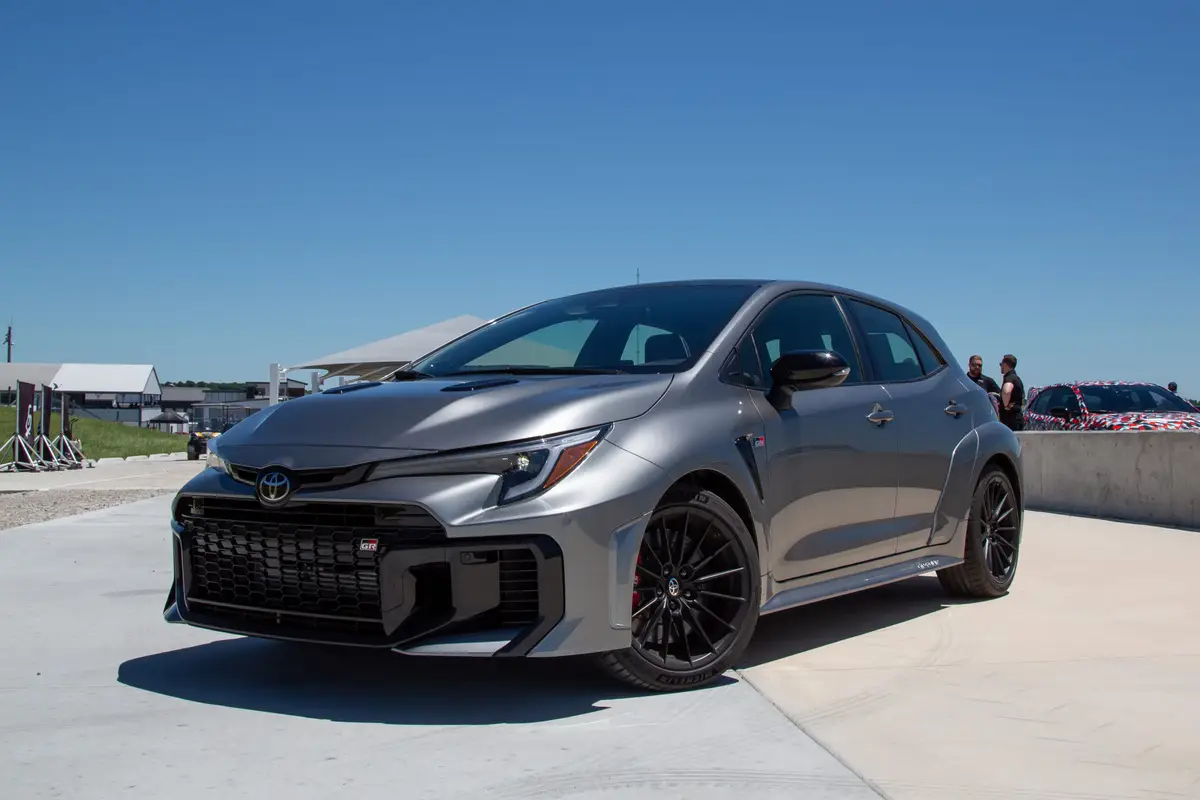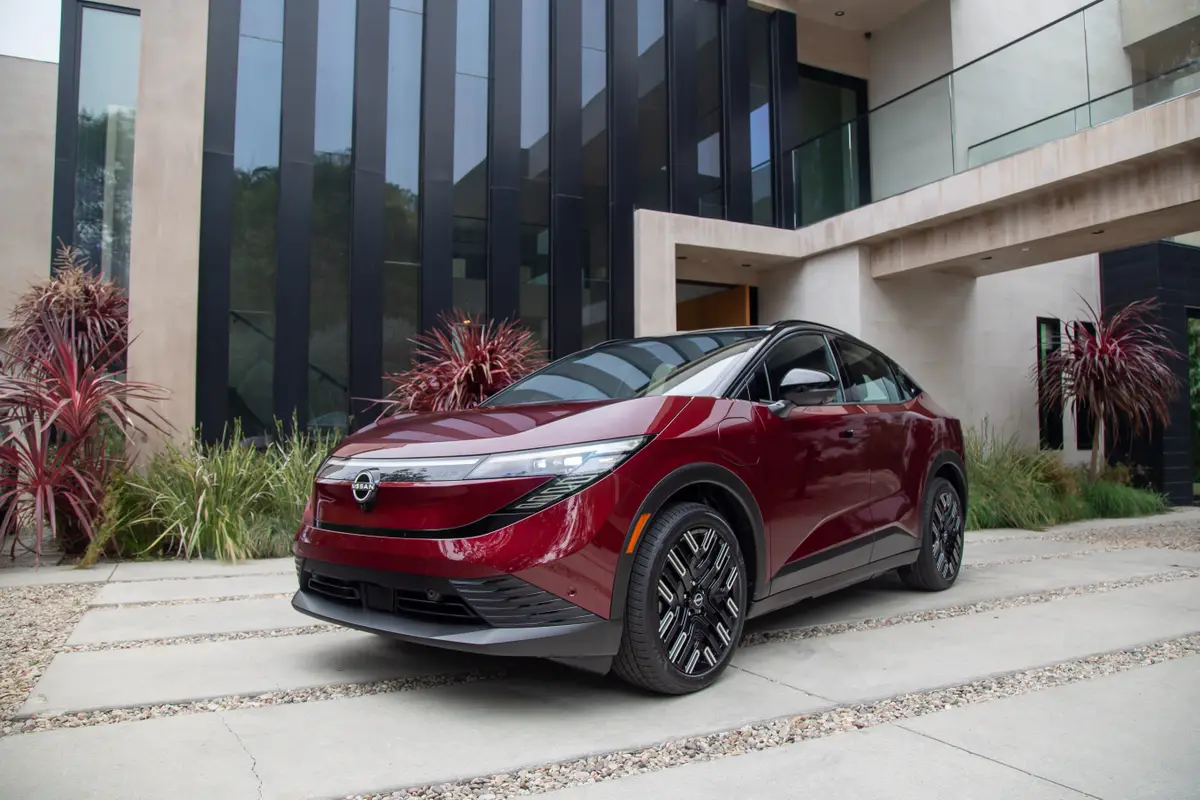2021 BMW X5 Plug-in Hybrid Range: How Far Can It Go on Electricity Alone?

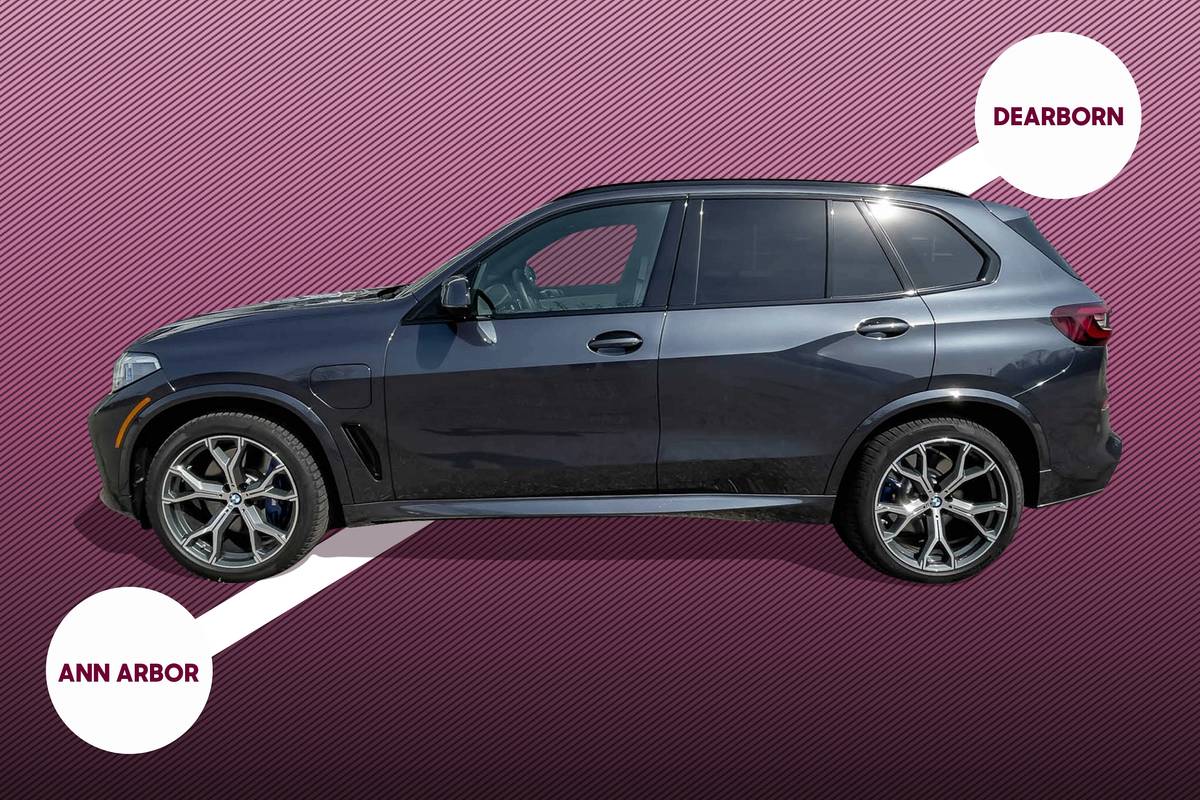
My recent testing of a 2021 BMW 530e plug-in hybrid saw the 530e overdeliver on its promise of 19 miles of electric-vehicle range, returning 28.4 miles of electric-only travel before the gas engine kicked on. A couple of weeks later, another BMW PHEV appeared for testing: the 2021 BMW X5 xDrive45e, the mid-size SUV that’s related to the 530e but with a few critical differences.. Would this bigger, taller, heavier crossover be able to match the results of the 5 Series plug-in sedan? Or would its inherent bigness prove to be a liability, preventing it from matching the sedan’s performance? The results were surprising in some ways, but the X5 was starting with perhaps an unfair advantage: a better powertrain and bigger battery.
Related: 2021 BMW 530e Range: How Far Can It Go on Electricity Alone?
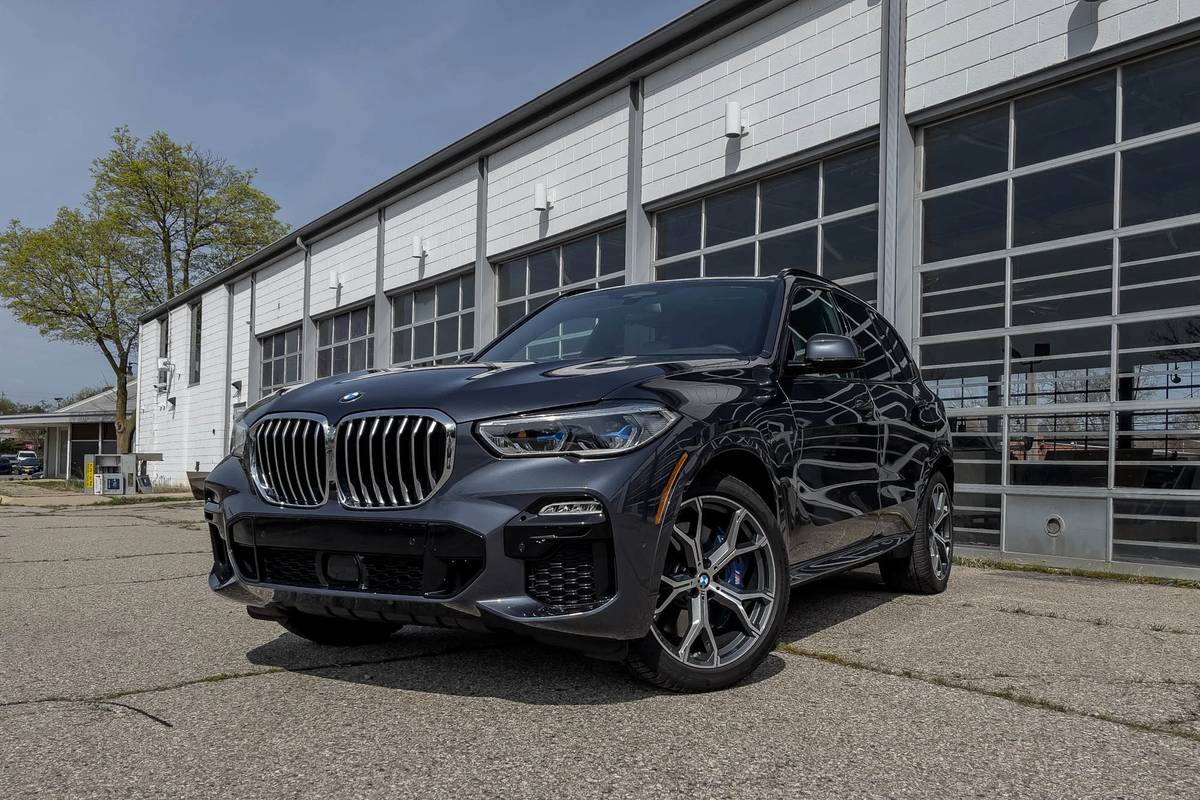
The Ride
We’ve talked about how a lot of European plug-in hybrids tend to have a specific mission, allowing owners to travel highway commutes under gas power, and allowing them entry into congested city centers with reduced or eliminated entry fees (called “congestion charges”). The X5 is a little different, however, as it features a powertrain that seems better suited to American-style commutes than European congestion charge avoidance. BMW hasn’t offered the X5 in a plug-in hybrid version in the U.S. since the previous generation’s 2018 model year. For 2021, BMW ditched the previous SUV’s turbocharged four-cylinder and 9.2-kilowatt-hour battery and replaced it with a turbocharged 3.0-liter inline six-cylinder engine and an updated 24-kwh battery pack. It’s good for an output of 389 horsepower and 443 pounds-feet of torque, a massive 81-hp and 111 pounds-feet improvement over the outgoing powertrain.
As a result, the BMW-estimated zero-to-60-mph time dropped by 1.2 seconds to just 5.3 secs, the tow rating increased to an impressive 7,200 pounds, and the EPA-estimated electric range more than doubled from the 2018 model’s 14-mile range to the 2021’s 31-mile range. Overall fuel economy, however, drops from 24 mpg in the old model to just 20 mpg in the new one (blame the two extra cylinders), and full range suffers considerably, falling from 540 miles on the 2018 model to 400 miles on the new one. The bigger battery is the reason for the improvement in EV range. Located in the X5’s underbody, the battery only impacts the cargo area by 0.8-cubic feet versus a standard gas-powered X5 when the second-row seatbacks are up, and by 1.1 cubic feet when they’re down. But that bigger battery also means a smaller gas tank, dropping from 21.9 gallons to 18.2 gallons in the latest version. BMW has decided that a boosted EV range and better all-around performance chops are worth the trade-off in less overall range and slightly worse gas-powered fuel economy.
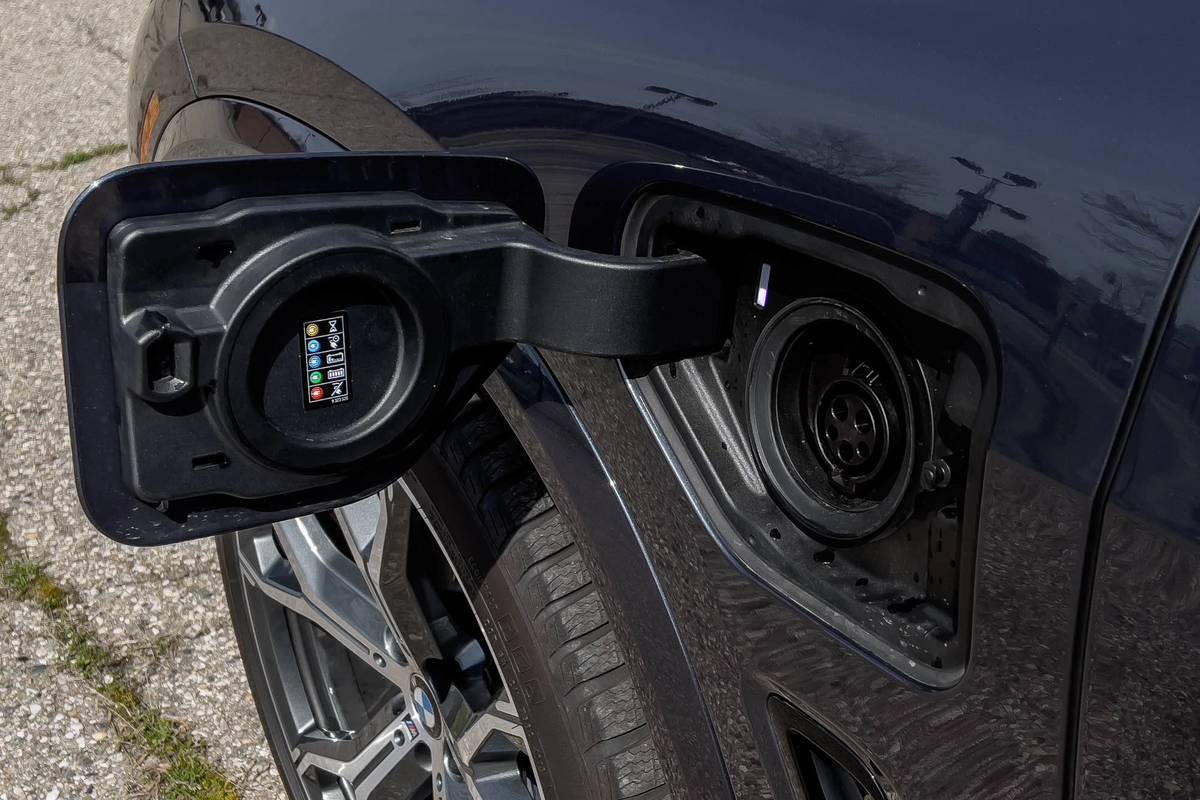
The Route
The PHEV test route I have remains constant, stretching from Ann Arbor, Mich., to a fixed point in Dearborn, Mich., and back again. It’s a mixed-speed route with a combination of urban stop-and-go driving and higher-speed, divided, multilane boulevards. It’s good for providing a variety of conditions, but speed limits are adhered to, and acceleration and deceleration are always done at a moderate, easy pace — no stoplight drag races and no slamming on the brakes unless it’s necessary. I also keep the climate control off, which can trigger the gasoline engine in some cars and drop electric range by a couple of miles right off the bat in others. With the tires filled to their manufacturer-recommended settings, I retraced the route done just a couple weeks earlier in the 530e.
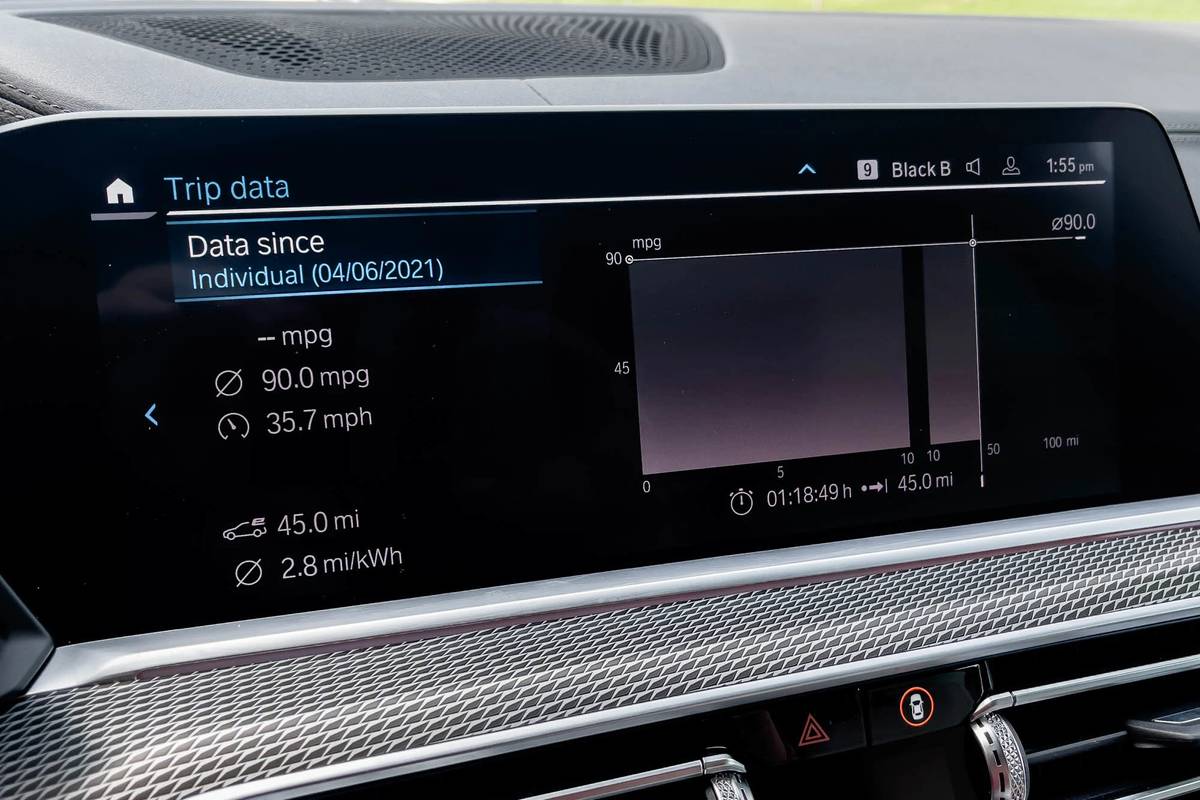
The Results
The 530e’s EV range overperformance turned out to be nothing compared to what the X5 xDrive45e delivered. The EPA says that the X5 PHEV should get 31 miles on a full charge before the gas engine kicks in to keep things moving, but my test saw it travel 45 miles before the six-cylinder motor thrummed to life. That’s an overdelivery of 45%, and this is without any attempt at hypermiling or taking any other steps (beyond keeping climate control off) to try and maximize the range. That’s an astonishing figure, and makes me think that the X5 could work very well for people looking to trade up from something like a Chevrolet Volt PHEV, which in its last iteration for 2019 was able to achieve 53 miles of EV range, but offered compromised passenger and cargo room due to its awkward, aerodynamics-first design. One could commute to and from work via nothing but electricity, charge up at home overnight and still have the ability to take longer drives using the gas-powered powertrain, which was how Chevrolet used to bill the utility of the Volt. Now, such a feat can apparently be achieved by a much larger, more comfortable and far more luxurious crossover.
- ${price_badge()}
- ${ami_badge()}
- ${battery_badge()}${ev_report_link()}
- ${hot_car_badge()}
- ${award_badge()}
- ${cpo_badge()}
${price_badge_description}
${ami_badge_description}
The EV Battery Rating is based on this vehicle's current expected range relative to the vehicles expected range when new. ${battery_badge_text}
Certified cars are manufacturer warrantied and typically go through a rigorous multi-point inspection.
This car is likely to sell soon based on the price, features, and condition.
${award_blurb}
${award_two_blurb}
Shop the 2021 BMW X5 near you

You’ll pay for the privilege, however, as the 2021 X5 xDrive45e starts at $66,395 including destination fee, and my test car topped $83,000 given the heavy options list that included things like an LED-illuminated moonroof, M Sport blue brake calipers, leather interior and more. That’s a bit more than you’ll pay for a standard X5, but given that there’s no drop off in performance, and the PHEV has better fuel economy and can operate for significant distances in full electric mode, it might make sense for people who want to enjoy the benefits of electric operation but who aren’t yet ready to take the plunge on a full-electric Tesla Model X or Model Y (or who might be understandably leery about Tesla’s reputation for build quality; in recent reliability reports, BMW as a whole fared better).
Related Video: 2019 BMW X7: First Drive
More From Cars.com:
- 2021 BMW X5 Plug-In Hybrid Returns at Long Last With More Juice, More Pep, More EV Range
- How Do Car Seats Fit in a 2020 BMW X5?
- Here’s How Far We Went on Electricity Alone in a BMW X3 Plug-In Hybrid
- 2021 Volvo XC90 Recharge Range: Here’s How Far We Went on Electricity Alone
Cars.com’s Editorial department is your source for automotive news and reviews. In line with Cars.com’s long-standing ethics policy, editors and reviewers don’t accept gifts or free trips from automakers. The Editorial department is independent of Cars.com’s advertising, sales and sponsored content departments.

Detroit Bureau Chief Aaron Bragman has had over 25 years of experience in the auto industry as a journalist, analyst, purchasing agent and program manager. Bragman grew up around his father’s classic Triumph sports cars (which were all sold and gone when he turned 16, much to his frustration) and comes from a Detroit family where cars put food on tables as much as smiles on faces. Today, he’s a member of the Automotive Press Association and the Midwest Automotive Media Association. His pronouns are he/him, but his adjectives are fat/sassy.
Featured stories

